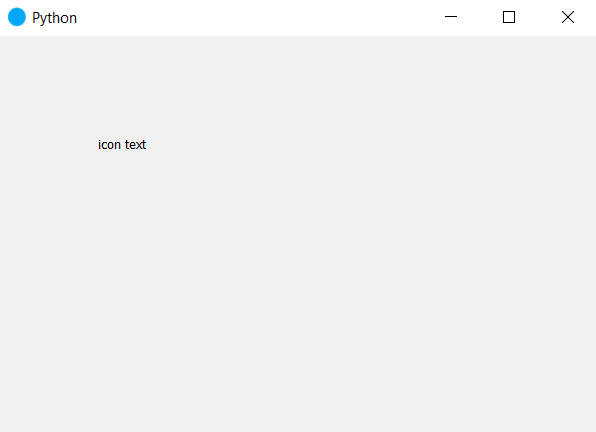PyQt5 nos permite configurar el ícono de la ventana usando el método setWindowIcon(), por otro lado, el método setWindowIconText() también está presente en él, lo que nos permite configurar el texto del ícono.
Aunque no se recomienda su uso, ya que no tiene ningún uso, se usó en versiones anteriores, es decir, antiguas. Ahora se usa para hacer que los códigos fuente antiguos funcionen. Fue utilizado por el administrador de ventanas ahora ya no se usa.
Sintaxis: self.setWindowIconText(“texto”)
Argumento: Toma una string como argumento.
Retorno: si no se establece ningún icono, devolverá una string NULL; de lo contrario, devolverá el texto establecido antes.
Código:
Python3
# importing the required libraries
from PyQt5.QtCore import *
from PyQt5.QtGui import *
from PyQt5.QtWidgets import *
import sys
class Window(QMainWindow):
def __init__(self):
super().__init__()
# set the title
self.setWindowTitle("Python")
# setting window icon
self.setWindowIcon(QIcon("logo.png"))
# setting icon text
self.setWindowIconText("logo")
# setting the geometry of window
self.setGeometry(60, 60, 600, 400)
# creating a label widget
self.label_1 = QLabel("icon text ", self)
# moving position
self.label_1.move(100, 100)
self.label_1.adjustSize()
# show all the widgets
self.show()
# create pyqt5 app
App = QApplication(sys.argv)
# create the instance of our Window
window = Window()
# start the app
sys.exit(App.exec())
Producción :

Nota: No se recomienda usar este método en los códigos, ya que no sirve para los sistemas modernos.
Publicación traducida automáticamente
Artículo escrito por rakshitarora y traducido por Barcelona Geeks. The original can be accessed here. Licence: CCBY-SA